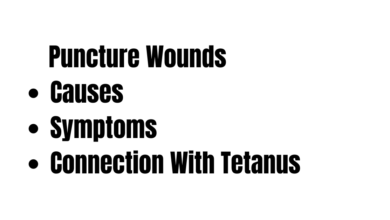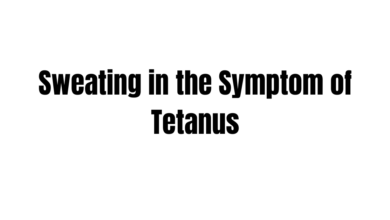Managing Muscle Rigidity: A Comprehensive Guide




Now our discussion is about on managing muscle rigidity: a comprehensive guide. Rigidity, often referred to as muscle stiffness, is a condition that can significantly impact one’s life. It can affect people of all ages and stems from various causes, including neurological disorders and medical conditions. In this article, let’s take a deep dive into the world of rigidity, exploring its different forms, causes, management approaches, and its profound effect on individuals.
Introduction to Rigidity
To begin, let’s grasp the essence of rigidity. It’s essentially the resistance of muscles to passive movement. You might experience it as constant muscle stiffness or intermittent bouts of increased tension. While rigidity can manifest in any part of the body, it’s often most noticeable in the limbs and neck.
More on Wikipedia: Rigitidy in Tetanus
Causes of Rigidity
Understanding what leads to rigidity is crucial for effective management. Rigidity can be brought on by various factors, including:
- Neurological conditions
- Muscular disorders
- Medications
- Psychological influences
- Injuries or trauma
Other Symptoms Of Tetanus : Symptoms Of Tetanus
Understanding Muscular Rigidity
Different Types of Muscular Rigidity
Muscular rigidity takes on different forms, each with its unique characteristics:
- Spasticity: This involves heightened muscle tone and exaggerated reflexes. It’s commonly seen after neurological issues like stroke.
- Dystonia: Dystonia leads to sustained muscle contractions, resulting in abnormal postures and repetitive movements.
- Rigidity in Parkinson’s Disease: Rigidity is a hallmark symptom of Parkinson’s disease, causing stiffness in the arms, legs, and neck.
Neurological Conditions and Rigidity
The Role of Rigidity in Parkinson’s Disease
One of the most notable connections to rigidity is in Parkinson’s disease. It occurs due to the gradual loss of dopamine-producing cells in the brain, leading to impaired muscle control.
Dystonia: A Look at Another Neurological Condition
Dystonia is another neurological disorder that frequently involves muscle rigidity. It results from abnormal brain signals causing sustained muscle contractions, resulting in repetitive and sometimes painful movements.
Medical Evaluation and Diagnosis
To effectively manage rigidity, a comprehensive medical evaluation and diagnosis are crucial. Healthcare professionals employ physical examinations, medical history reviews, and, at times, imaging tests to pinpoint the root cause of rigidity.
Managing Rigidity
Medications: How They Can Help
Rigidity management often involves medication to ease muscle stiffness and discomfort. Doctors may prescribe muscle relaxants and anti-spasmodic drugs tailored to the specific diagnosis.
The Benefits of Physical Therapy
Physical therapy plays a pivotal role in rigidity management. Therapists work closely with individuals to improve muscle strength, flexibility, and overall mobility through targeted exercises and stretching routines.
Lifestyle Changes to Relieve Rigidity
In addition to medical interventions, certain lifestyle changes can help alleviate rigidity:
- Staying well-hydrated
- Maintaining a balanced diet
- Regular physical activity
- Ensuring adequate rest and sleep
Coping Strategies for Those Dealing with Rigidity
Living with rigidity can be challenging, but there are strategies individuals can use to cope effectively:
- Seeking emotional support
- Exploring relaxation techniques
- Joining support groups
The Vital Connection Between Emotional Well-being and Rigidity
Emotional well-being closely intertwines with physical health. Managing stress, anxiety, and depression is crucial for individuals dealing with rigidity, as these emotional factors can influence symptom severity.
Rigidity in Children
Rigidity can also affect children, often due to neurological or developmental conditions. Early diagnosis and intervention are vital in these cases to ensure proper development.
Research and Advances in Rigidity Treatment
Continual research in the field of neurology and muscle disorders has led to advancements in rigidity treatment. New therapies and medications continue to emerge, offering hope for improved quality of life for those affected by rigidity.
Support Groups and Resources
Support groups and online resources are invaluable for individuals and families dealing with rigidity. These platforms provide a sense of community, a place to share experiences, and access to information and advice.
Other Symptoms Of Tetanus : Symptoms Of Tetanus
Conclusion
In conclusion, rigidity is a multifaceted condition with diverse underlying causes and presentations. Effectively managing it often involves a multifaceted approach, including medical assessment, therapy, lifestyle modifications, and emotional support. With the right strategies and resources, individuals grappling with rigidity can lead fulfilling lives.

1. What is muscle rigidity, and how does it relate to tetanus?
Muscle rigidity refers to stiff or tense muscles, and it can be a symptom of tetanus, a serious bacterial infection caused by Clostridium tetani.
2. How does tetanus cause muscle rigidity?
Tetanus produces muscle rigidity by releasing a neurotoxin that affects the nervous system, leading to muscle spasms and stiffness.
3. Is muscle rigidity the only symptom of tetanus?
No, tetanus can cause other symptoms, including difficulty swallowing, muscle spasms, fever, and increased heart rate.
4. What are the specific muscles commonly affected by rigidity in tetanus?
Tetanus-related rigidity often affects the jaw muscles (hence the term “lockjaw”) and can spread to other muscle groups.
5. How can muscle rigidity in tetanus be treated?
Treatment involves hospitalization, wound care, tetanus immune globulin (TIG), and muscle relaxants to manage muscle stiffness.



